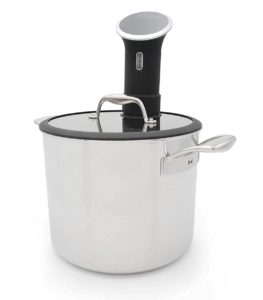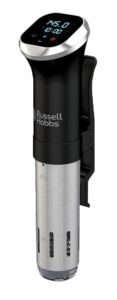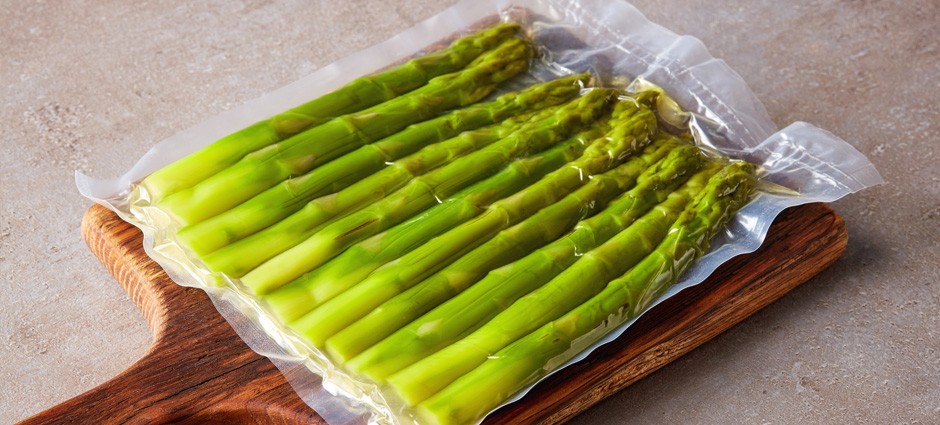It sounds very gourmet: sous vide. Chefs have long used this precision cooking technique, and now the advent of home-cooking sous vide water-circulator appliances and cookbooks makes the seemingly intimidating technique easy to master.
The advantages are enormous, especially for time-starved home cooks. “I can be on the soccer field, and my food is bobbing away in the water bath, waiting for dinner to be ready when I get home,” says Meesha Halm, coauthor of Sous Vide Made Simple (Ten Speed, 2018).
The Basics
The term “sous vide” is French for vacuum. “It makes it sound complicated—like molecular gastronomy,” says Philip Preston, a culinary inventor for PolyScience and early pioneer of sous vide cooking. “It is the farthest thing. It is just precise cooking technology.” The cooking method itself is nothing more than sealing food in a bag, cooking it in a water bath at a very precise temperature—a key step—and finishing it with seasoning, searing and perhaps a sauce.
Why Sous Vide?
It’s all about texture, tenderness and moisture. For proteins, like beef, pork, lamb and chicken, muscle fibers are made up of 75 percent water, which means that traditional cooking draws out the water and toughens up the meat. In sous vide, the water bath breaks down connective tissues and retains moisture—hence a perfectly cooked steak, chop or chicken breast every time.
It’s not just for meats, either. Sous vide works well for vegetables, eggs, and fish and seafood, too.
How to Sous Vide
Both Halm and Preston recommend that beginners start with predesigned recipes from cookbooks, the internet and sous vide manufacturers. Halm says once you get comfortable with the techniques, you’ll be able to convert your existing recipes to sous vide.
“It’s easy to get a little mystified by sous vide cooking,” Preston says. But, “it is the ultimate de-stressor, and it gives home cooks a window to cook meals they would normally shy away from.”
Try our selection of recipes:
Sous vide Korean BBQ-style steak
Sous vide grilled pork chops with apple chutney
Take-Home Tips
- Buy a big pot. Choose a cooking pot or food- and temperature-safe (to 203 degrees) polycarbonate bin from restaurant-supply stores, large enough for good water circulation.
- Get the right bags. Use a vacuum sealer and bags or store-bought freezer plastic bags with a pinch-seal top (do not use zipper seals). Gradually drop filled but open freezer bags in the water; the pressure will release the air and seal the bag, allowing the food to cook. Avoid food-based plastics; they will dissolve in the water.
- Glass is an option. If you prefer glass, use sealed mason jars, placing them in the water before the temperature rises.
- Watch for air. If the bag fills with air while cooking, do not eat the food; throw it out.
- Chill out. If a recipe calls for chilling the bag, place it in a large bowl, half-filled with ice and water.
- Weight it down. Vegetables will float, so place pie weights or a smooth spoon in the bag to weigh it down (avoid sharp objects that may cut the bag).
- Indulge your sweet tooth. Desserts like custards, puddings and cooked fruits are a good fit for the sous vide method.
Try:



